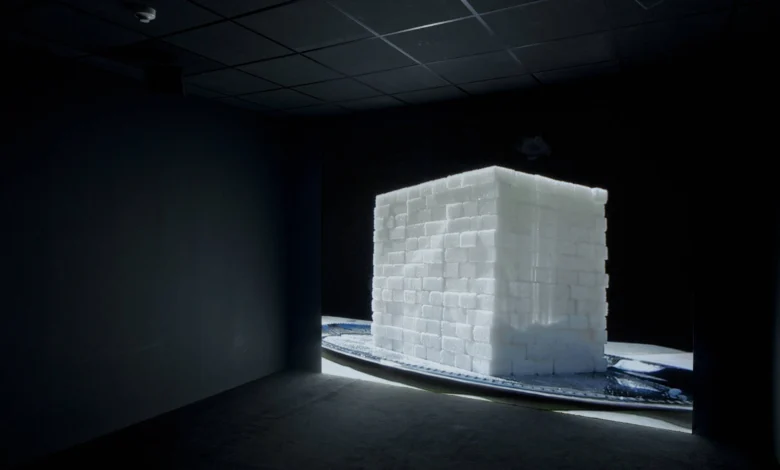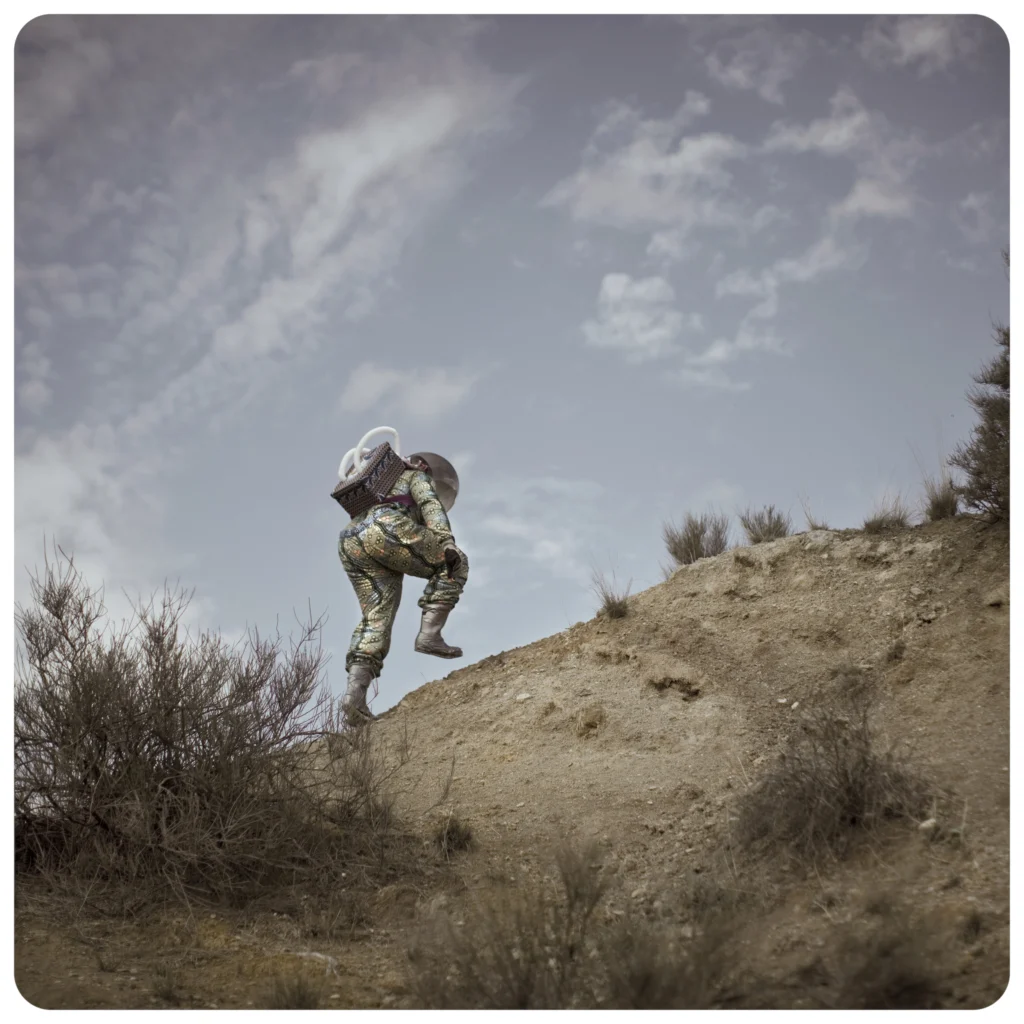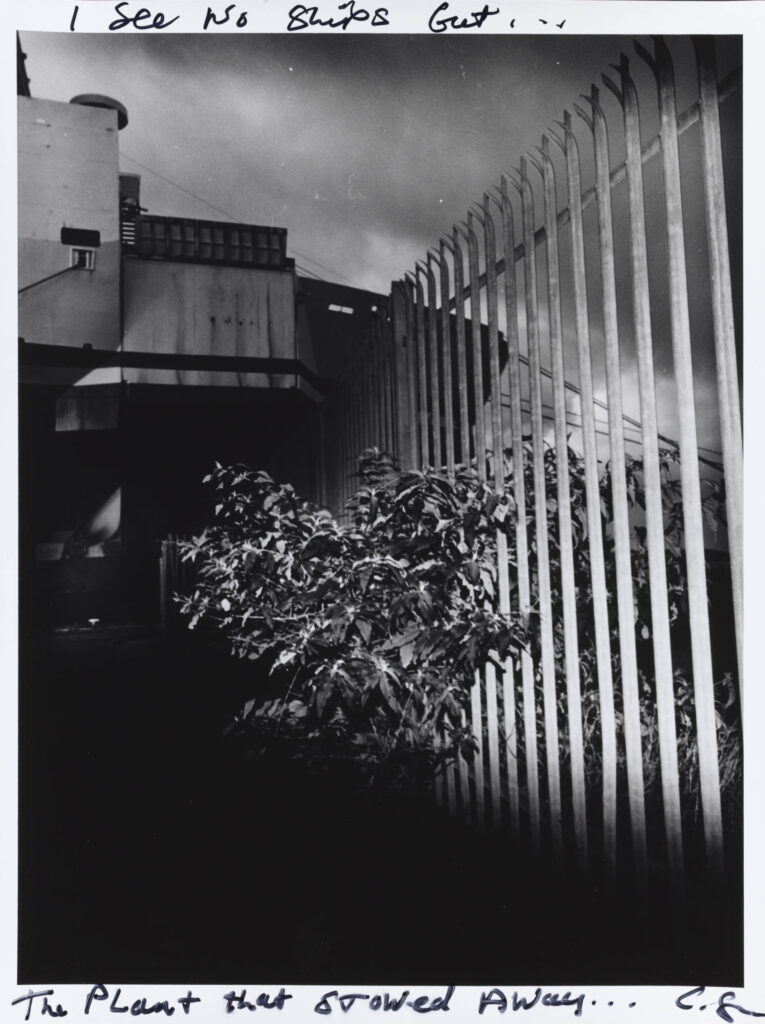
Tate Liverpool Traces The Battle Between Nature And Industrialisation In ‘The Plant that Stowed Away’ Exhibition
In February 2025, Tate Liverpool will present a new display, The Plant that Stowed Away. The display will move outwards from Liverpool and its surroundings, tracing connections between the city and its trading history, reflecting on the journeys that have caused the movement of plants and people, and their impact on the city’s rich multicultural fabric.
This display is inspired by the Weeds of Wallasey series by Wirral-born photographer Chris Shaw which highlights the battle between nature and the post-industrial landscape of the area where he grew up. Taken between 2007 and 2012, Shaw’s photographs all have handwritten titles at the bottom of each image and the title of the show refers to one such work: I See No Ships but The Plant that Stowed Away.
The Plant that Stowed Away builds on the narratives in Shaw’s imagery, drawing attention to the extraction and shipping of plants and other products of trade. It also highlights how urban and natural environments have been changed by industrialisation, colonisation, and migration, connecting wider sociohistorical contexts in which places like Liverpool have played a major role.

Simryn Gill’s photographic series Channel 2014, taken in Port Dickson, Malaysia 6,500 miles from Wallasey, can be seen in dialogue with Shaw’s work. In these images showing evidence of sea pollution in a small mangrove forest in Gill’s hometown, rubbish stuck in branches and roots becomes indistinguishable among the plants, while large cargo ships can be seen in the distance. More widely, both photographic series raise questions about the consequences of globalisation on the environment.
Christine Eyene, Research Curator, Tate Liverpool, said: “The Plant that Stowed Away is part of an ongoing research into the theme of ‘Botanical Histories and Colonial Legacies’, exploring untold stories on the links between Liverpool and the Global South. It is an amazing opportunity to share these broader narratives with local audiences through great historical and contemporary works from Tate collections.”
Many of the artworks blend plant and people, evoking forms of hybridisation. La Danseuse (The Dancer) 1949 by Henri Matisse refers to a female dancer while the semi-abstract central motif suggests the shape of a leaf. The blending of human and nature continues in You Were Always on My Mind 2007 by Wangechi Mutu whose hybrid figures question natural and artificial constructions of beauty and plenty.
The Plant that Stowed Away will include a selection of photographs from Cristina de Middel’s Afro-futurist Afronauts 2012 series which show a fictional extra-terrestrial, desert-like landscape where human and plant life are scarce, linking to contemporary issues around land exploitation and climate change, as well as the colonial nature of space exploration.

The display will also feature Underwater Plant Life 1995-2008 by Lubaina Himid, the first time the work will have been exhibited, and a large textile piece, Talay O Puv, O Zeisko Tan Part II 2021 by Delaine Le Bas. Kader Attia’s caustic film Oil and Sugar #2 2007, which depicts a white block made of sugar cubes becoming slowly saturated with petroleum, turning completely black before suddenly disintegrating will also be presented.
In addition to this display, What The Mountain Has Seen, an exhibition presenting the research underpinning the Tate Liverpool project will be presented at the Exhibition Research Lab Gallery at Liverpool John Moores University from 7 February to 23 May 2025.
The Plant That Stowed Away is curated by Dr Christine Eyene, Senior Lecturer in Contemporary Art at Liverpool John Moores University and Research Curator at Tate Liverpool and Kate Haselden, Assistant Curator, Tate Liverpool.
For more information visit tate.org.uk/visit/tate-liverpool.







